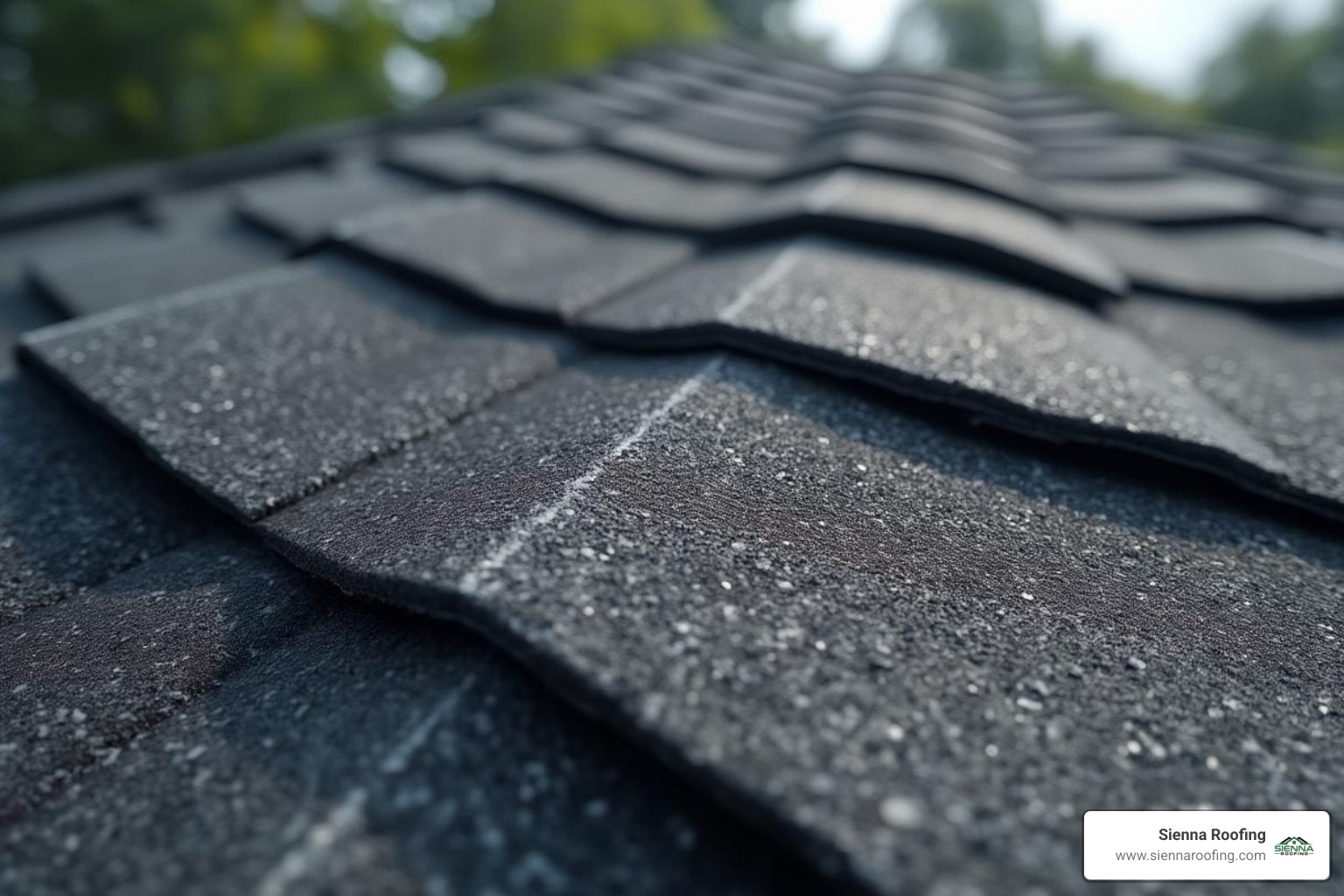Understanding the True Cost of Hail Damage Repair
When a hailstorm strikes, the hail damage repair cost can be a major concern. The price varies widely based on the severity of the damage, but understanding the potential costs is the first step toward recovery. For homeowners in Texas, finding a reliable roofing company in Houston is crucial for peace of mind and expert guidance through the repair process.
Here’s a quick look at typical cost ranges:
- Car Hail Damage: $3,000 to $15,000+, with Paintless Dent Repair (PDR) costing $50-$200 per dent.
- Roof Hail Damage: An average of $4,250, with a typical range of $375 to $7,500.
This guide will help you steer the complexities of hail damage, from identifying the signs to understanding repair costs and insurance claims. Andre Castro, CEO of Sienna Roofing & Solar, LLC, lends his expertise to ensure every repair meets the highest standards.

Common hail damage repair cost vocab:
What Does Hail Damage Look Like? On Your Roof vs. Your Car
After a hailstorm, assessing the damage is the crucial first step, but it’s not always obvious. Knowing what to look for on your roof and car can help you understand the potential hail damage repair cost and prevent bigger problems later.
Identifying Hail Damage on Your Roof
Your roof is your home’s primary shield, and even small hailstones can cause significant damage. It’s important to know the signs.

Here’s what to look for on different roof types:
- Asphalt Shingles: Look for granule loss, which appears as dark, circular spots where the protective top layer has been knocked off. You may find granules in your gutters. Hail can also cause bruising, creating soft spots that weaken the shingle, or visible cracks and fractures. These are all signs of hail damaged shingles.
- Metal Roofs: While durable, metal roofs can show noticeable dents from larger hailstones. Severe dents may affect drainage or damage protective coatings.
- Tile Roofs (Clay/Concrete): Hail can chip, crack, or break individual tiles, leaving your roof’s underlayment vulnerable.
- Other Areas: Don’t forget to check for dented or cracked gutters, downspouts, roof vents, and skylights. Hail can also damage your home’s siding, leaving dents or chips.
Since much of this damage is subtle and best seen up close, a professional inspection is recommended to identify all issues and prevent a much larger hail damage repair cost in the future.
Telltale Signs of Hail Damage on a Vehicle
Car damage is often more obvious than roof damage. The most common signs are dents and dings, typically concentrated on horizontal surfaces like the hood, roof, and trunk.
Larger hailstones can cause more severe issues:
- Cracked Windshields and Glass: Strong impacts can crack or shatter windows and mirrors.
- Chipped Paint: If the paint is broken, the exposed metal can rust if not repaired promptly.
- Scratches: Hail accompanied by strong winds can scratch the vehicle’s surface.
Knowing these signs is the first step toward getting your car repaired. For future storms, you can learn how to protect your car from hail by using covered parking or a specialized car cover.
Key Factors That Influence Hail Damage Repair Cost
The final bill for hail repair isn’t a fixed number. Several key factors for both your home and vehicle determine the total hail damage repair cost. Understanding these variables will help you make sense of repair estimates.
For Your Home’s Roof
The cost to repair your roof can vary significantly based on these factors:
-
Roofing Material: This is a primary cost driver.
- Asphalt Shingles: Most common and generally least expensive to repair, but susceptible to granule loss and bruising.
- Metal Roofs: Durable, but dent repairs can be moderately expensive.
- Slate & Clay/Concrete Tiles: Very tough, but replacing individual cracked or broken tiles is costly and labor-intensive.
- Wood Shakes: Hail can cause splits or cracks, requiring specialized labor and materials.
- PVC/Rubber (Flat Roofs): Highly resistant, but large hail can cause dents or cracks that are complex to repair.
-
Roof Size and Slope: A larger or steeper (high-pitch) roof requires more materials and labor, increasing the cost. Steep roofs require additional safety precautions, which can raise labor rates.
-
Severity of Damage: Minor spot repairs will always be cheaper than a full roof replacement required for widespread damage.
-
Labor Costs & Location: Labor rates and material prices vary by geographic location. Local building codes can also influence the overall hail damage repair cost. For more on general costs, check out our Ultimate Guide To Roof Repair Cost What To Expect In 2025.
For Your Vehicle
For your car, the hail damage repair cost depends on these specific details:
-
Number, Size, and Depth of Dents: More dents, and larger or deeper ones, increase the repair time and cost. Paintless Dent Repair (PDR) can range from $50 to $200 per dent.
-
Body Panel Material:
- Steel: The most common material, generally easier and less expensive to repair.
- Aluminum: Lighter but harder to repair, as it doesn’t have the “metal memory” of steel. This can increase repair costs by up to 25%.
-
Paint Damage: If hail chips or cracks the paint, PDR is not an option. Traditional bodywork (sanding, filling, repainting) is required, which significantly increases the cost, potentially up to $5,000 for a full respray.
-
Dent Accessibility: Dents in hard-to-reach areas that require removing interior trim or other components will increase labor time and overall cost.
Breaking Down the Average Costs: Roofs, Cars, and Repairs
Knowing the typical cost ranges for hail damage repair helps you budget and evaluate quotes from contractors and auto body shops. These are averages, and your final cost will depend on the specific damage.
The Average Roof Hail Damage Repair Cost
The average hail damage repair cost for a roof is around $4,250, but it can range from $375 for minor fixes to $7,500 for more extensive work. The cost varies based on material, roof size, and damage severity.
Here’s a look at repair costs by roofing material:
| Roofing Material | Cost per 100 sq ft (approx.) | Notes |
|---|---|---|
| Asphalt Shingles | $400 – $1,500 | Most common and generally less costly to repair. |
| Clay or Concrete Tiles | $300 – $700 | Durable, but replacing individual cracked tiles can be pricey. |
| Metal Roofing | $450 – $700 | Tough, but dent repairs are moderately expensive. |
| PVC / Rubber (Flat) | $400 – $2,000 | Extremely durable, but complex to repair if cracked. |
| Slate | $500 – $3,000 | Most expensive to repair due to specialized labor and materials. |
| Wood Shakes/Shingles | $450 – $900 | Hail can cause splits or cracks, requiring matching materials. |
If damage is widespread, a full roof replacement may be necessary, typically costing between $4,000 and $16,000. Annually, hailstorms cause billions in property damage, highlighting the financial impact of these storms. You can find more facts and statistics about hail and its effects.
The Average Car Hail Damage Repair Cost
Car repair costs also vary widely based on the extent of the damage.
- Minor Damage: For hundreds of small dents, costs typically start at $3,000 to $5,000.
- Moderate Damage: With more numerous or larger dents, costs range from $5,000 to $8,000.
- Severe Damage: For extensive denting, chipped paint, or structural issues, costs can be $8,000 to $15,000 or more, especially for vehicles with aluminum panels.
Paintless Dent Repair (PDR) is the preferred method for individual dents without paint damage, costing $50 to $200 per dent. If the paint is chipped, traditional repairs are needed, which can cost $500 to $1,500 per panel.
Navigating Insurance Claims for Hail Damage
Filing an insurance claim is a key step in managing the hail damage repair cost. The process differs slightly for your home and vehicle, but understanding how to steer it can save you time and money.
Homeowner’s Insurance: Covering Your Roof
Hail damage to your roof is typically covered by your homeowner’s insurance policy as an “Act of God.”

Here’s what to know:
- Coverage: Damage is covered under your policy’s “dwelling” coverage. You are responsible for your deductible (typically $100-$1,000) before insurance pays.
- Claims Process: Contact your insurer promptly after the storm. They will send an adjuster to inspect the damage. It’s wise to have a trusted roofing contractor present during the inspection to ensure all damage is documented.
- ACV vs. RCV: Understand your policy. Actual Cash Value (ACV) pays for your roof’s depreciated value. Replacement Cost Value (RCV) covers the cost of a new roof, minus your deductible. RCV offers more comprehensive coverage.
- Choosing a Contractor: You have the right to choose your own contractor. Select a reputable, local company experienced with storm damage and insurance claims. For more guidance, see our page on navigating roofing insurance claims.
Auto Insurance: When Is It Covered?
Hail damage to your car is typically covered under your comprehensive auto insurance policy. Since hail is an “Act of God,” it’s considered a no-fault claim. This means filing for hail damage usually does not cause your insurance premiums to increase. You will still have to pay your auto deductible.
Always confirm the specifics with your insurance agent. NerdWallet offers a helpful guide on understanding comprehensive policies.
When is Damage a “Total Loss”?
An insurance company may declare your property a “total loss” if the repair cost is too high.
- For a Roof: This means the repair cost exceeds a certain percentage of the roof’s value, making a full replacement more practical. Your insurer will pay for a new roof (based on your ACV or RCV policy), minus your deductible.
- For a Vehicle: A car is typically totaled when repair costs exceed a percentage of its actual cash value (ACV), often around 75%. For example, a car valued at $10,000 might be totaled if repairs are estimated at $7,500 or more. Older vehicles with lower values are more likely to be totaled.
The Repair Process: What Are Your Options?
Repair methods for hail damage depend on the property and the severity of the impact. Understanding your options helps you make informed decisions and manage the hail damage repair cost effectively.
For Roofs: Repair vs. Replacement
The best approach for your roof depends on the extent of the damage.
- Spot Repairs: For minimal, localized damage, replacing a few cracked or bruised shingles is the most economical option.
- Sectional Replacement: If damage is concentrated in specific areas, replacing those sections can restore the roof’s integrity without a full replacement.
- Full Roof Replacement: For severe, widespread damage, a full replacement is the smartest long-term investment. It restores the entire system, comes with new warranties, and eliminates the risk of hidden issues.
A professional roof inspection is crucial to determine the true extent of the damage and recommend the right solution.
For Cars: PDR vs. Traditional Body Work
Vehicle hail repair comes down to two main methods, depending on whether the paint is intact.
-
Paintless Dent Repair (PDR): Skilled technicians use special tools to massage dents out from behind the panel, preserving the car’s original factory paint. This method is faster, more economical, and ideal for small-to-medium dents where the paint is not broken. It also helps maintain the vehicle’s resale value.
-
Traditional Repair: This is necessary if the paint is chipped or cracked, or if dents are too large or deep for PDR. The process involves sanding, filling, and repainting the affected panels. While more expensive and time-consuming, it can fix any level of damage. Auto body shops often combine both methods to keep the hail damage repair cost as low as possible.
Why You Shouldn’t Ignore Hail Damage
It’s tempting to postpone repairs after a hailstorm, but what seems like a minor issue can quickly become a severe and expensive problem. Ignoring the initial hail damage repair cost often means paying much more later.
The Risks of Neglect
For your home, even small hail impacts can breach your roof, leading to serious consequences.
- Water Damage and Leaks: Hidden breaches allow water to seep in, causing roof leaks that can lead to mold growth and costly remediation.
- Structural Issues: Persistent moisture can weaken your home’s framing, insulation, and drywall, leading to expensive structural repairs.
- Voided Warranties: Many roofing warranties require prompt repair of storm damage. Delaying could void your coverage.
- Future Claim Denial: If another storm hits, your insurer might deny a new claim by attributing the damage to pre-existing, unrepaired issues.
- Decreased Property Value: Visible damage on a roof or car significantly lowers its resale value.
For your car, unrepaired damage hurts its value and can even compromise safety if glass is cracked. You can learn more about the dangers of unrepaired hail damage to your vehicle.
The Benefits of Prompt Repair
Acting quickly offers numerous advantages:
- Preserves Property Value: Restores your home and car to their pre-damage condition.
- Maintains Structural Integrity: Prevents water intrusion and protects your home’s structure.
- Ensures Safety: Addresses issues like damaged glass or a compromised roof.
- Prevents Costly Secondary Damage: Stops problems like leaks, mold, and rust from escalating.
- Provides Peace of Mind: Knowing your investments are protected is invaluable.
At Sienna Roofing, we specialize in comprehensive roof repair services that address hail damage effectively, ensuring your home remains protected.
Frequently Asked Questions about Hail Damage Repair
It’s natural to have questions when dealing with hail damage. Here are straightforward answers to some of the most common concerns.
How long do I have to file a hail damage claim?
File your claim as soon as possible. Most insurance policies allow about one year from the storm date, but waiting can cause complications. Delays may lead to further damage (like leaks), which an insurer could argue is due to neglect, potentially leading to a claim denial. Check your policy or call your agent to confirm your specific timeline.
Will a hail damage claim raise my insurance rates?
Generally, no. Hail damage is considered an “Act of God” and falls under comprehensive coverage for both home and auto policies. These are “no-fault” incidents and typically do not affect your personal premiums. Widespread claims in an area might lead to a general rate increase for everyone, but it would not be tied directly to your individual claim.
Can I perform DIY hail damage repairs?
We strongly advise against DIY hail damage repairs for anything beyond minor cosmetic issues. For your roof, improper fixes can cause new leaks, damage the structure, and void your warranty. For your car, DIY PDR kits often worsen the damage if used incorrectly, turning a simple repair into a costly one. Professionals have the training and tools to do the job safely and correctly, preserving your property’s value.
Conclusion
Dealing with the aftermath of a hailstorm is stressful, but understanding the potential hail damage repair cost is the first powerful step toward a solution. Whether you’re facing dings on your car or damage to your roof, the path to recovery starts with a professional assessment and a clear understanding of your insurance coverage.
Acting quickly is key to preventing small issues from becoming larger, more expensive problems. For homeowners in the Houston area, partnering with a trusted expert is vital for a high-quality, lasting repair.
Don’t let hail damage linger. We invite you to learn more about our comprehensive roofing storm damage repair services. Let the professionals at Sienna Roofing restore your property and your peace of mind.






